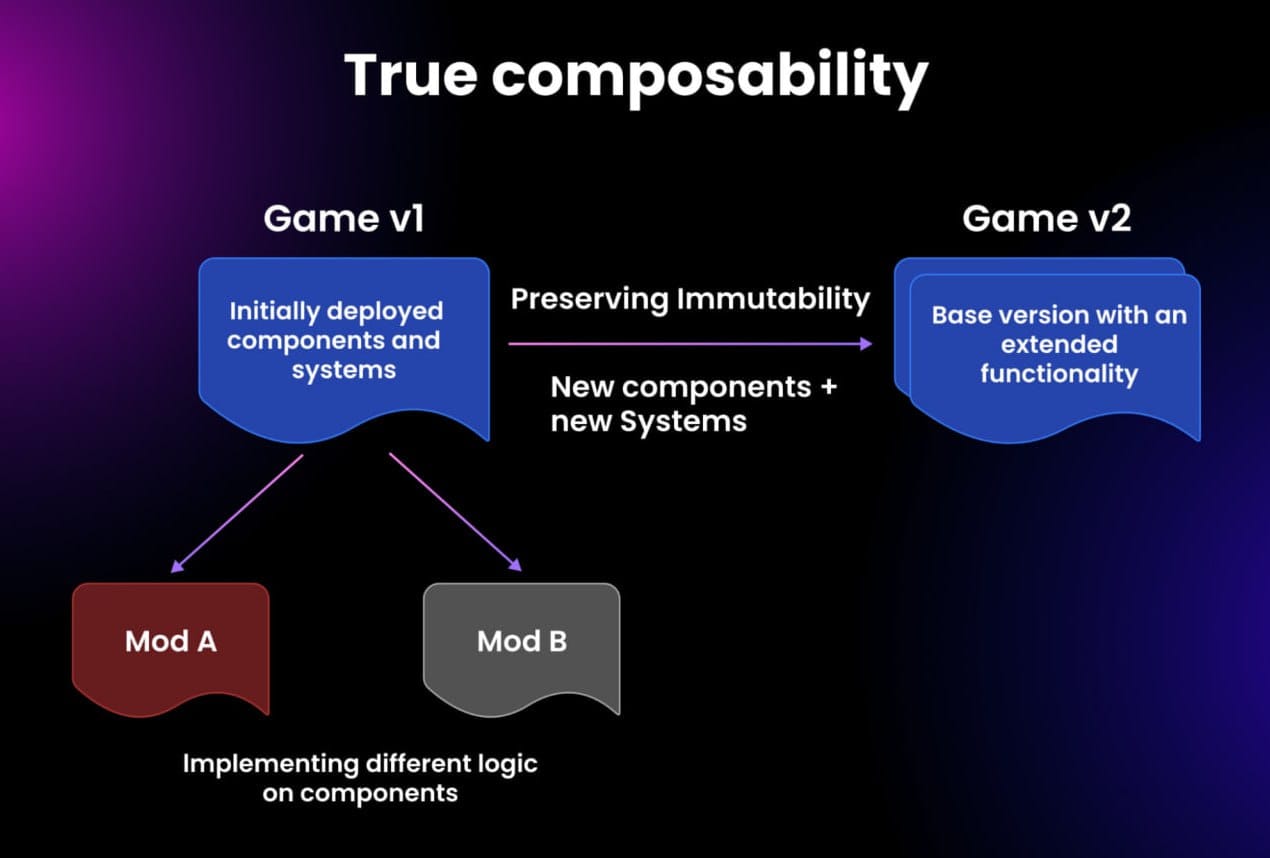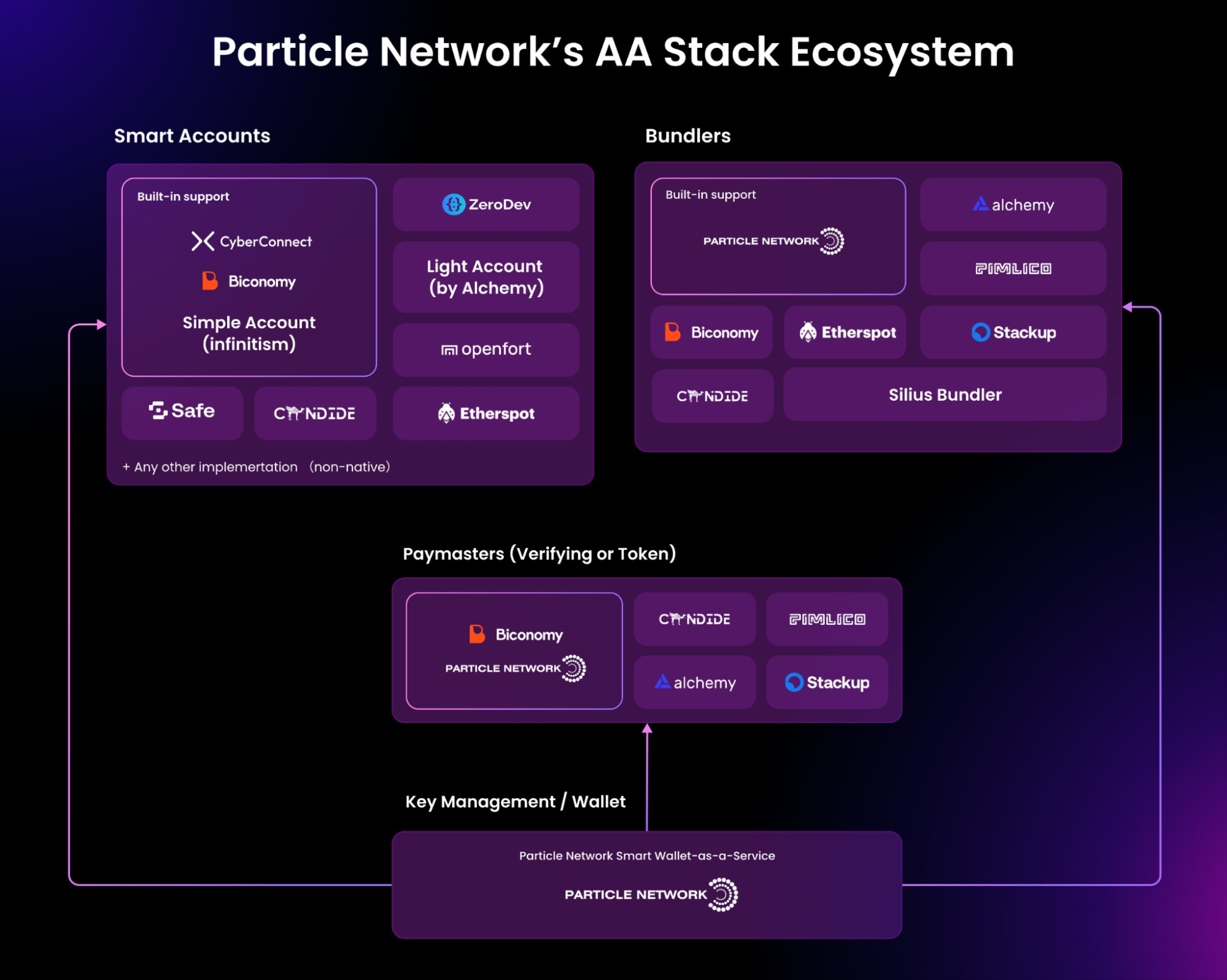Fully On-Chain Gaming: Can Smart Wallet-as-a-Service tools be a much-needed "final push"?

Table of Contents:
Fully on-chain gaming is still a somewhat obscure niche. For crypto OGs and those deep into the scene, the allure of games that exist regardless of whether their creators continue facilitating them and are endlessly, permissionlessly interoperable is fascinating. For others, the difficulties surrounding the creation and playing of these games, relying on blockchains as much as possible, are not worth the trouble.
Since they rely on decentralized systems, fully on-chain games (FOCGs) are notoriously harder to build than “regular” games. On top of these challenges, the well-known friction of Web3 onboarding and user experience are also seen as deterrents for players. As such, many creators feel like these trade-offs ultimately compromise the games’ playability and limit their audience. And, while some developers have found ways to make the most out of these constraints to create extremely original and creative approaches, others may not want to deviate from known frameworks and stick to games with intuitive dynamics.
At Particle Network, we have a history of partnering with gaming companies to implement our Modular Smart WaaS (Wallet-as-a-Service) solutions, helping them streamline the process of integrating Web3 and Account Abstraction (AA) into their experiences. In this article, we’ll dive into the world of FOCGs, their challenges, and analyze how Modular Smart WaaS tools can radically impact the experience of developers and players alike, potentially solving many of the current issues with FOCGs.
The world of fully on-chain games (FOCGs): History and evolution
The evolution of FOCGs has been marked by innovative breakthroughs proving these games’ unique role in both the gaming and Web3 ecosystems. Historically, it’s easy to pinpoint two games that played a special role in this evolution: DarkForest and Loot (for adventurers).
DarkForest's utilization of zk-SNARKs revolutionized FOCG by delivering a gameplay based on information asymmetries built entirely on-chain using zero-knowledge proofs, a novel concept. Beyond this technical feat, DarkForest introduced decentralized "digital physics," establishing the ability for players to introduce any dynamics that would fit the game’s specifications into it, sparking an ecosystem of alliance DAOs, user-built plugins, marketplaces, etc.
Meanwhile, Loot (for Adventurers), launched in August 2021, also introduced its own new paradigm for FOCGs. It completely abstracted the visual and gameplay layers typical to games and NFT collections, bootstrapping a bottom-to-top community-centric model for users to build value and narratives around it.
Both the above games created entirely unique experiences that could not be replicated without Web3’s features, proving the underlying potential of FOCGs. Furthermore, Web3’s inherent financialization makes it easy to draw a line between FOCGs and the different business models that could arise for and within them, further sparking interest in the niche.

Present and future
In 2023, FOCGs look like a land of many opportunities.
The current FOCG landscape is characterized by experimentation and coordinated building toward addressing the critical challenges of FOCG, which we’ll further discuss below. The ecosystem is still fairly new –with less than 1M active FOCG players–, so simple, memory-efficient games aimed at crypto enthusiasts are seen as the foundation for broader adoption.
Notably, the field is coalescing around a set of shared standards and sophisticated technologies. A notable example is this is the growing adoption of the MUD Web3 engine created by the Lattice team, the Dojo suite, and the broader Starknet gaming ecosystem. These advanced toolsets represent a significant leap from the days when teams built everything from scratch, enabling developers to prototype fully on-chain games rapidly and efficiently. These engines have taken the Entity Component System (ECS) architecture integral to game engines like MUD and Dojo, a feature that is now being adapted and improved for FOCGs.

The role of game engines in the development of large-scale games cannot be overstated, and this holds true for FOCGs as well. A robust engine is crucial for developers to deploy game logic swiftly, which not only shortens the development cycle but also sets a standard for data and operational protocols. This standardization is pivotal for subsequent iterative development and facilitates cross-calling within the open ecosystem.
By leading to more complex, immersive, and interactive gaming experiences, development tools are transforming the landscape of FOCGs and re-kindling the interest of developers. FOCGs face the challenge of evolving from basic gaming applications to becoming autonomous, sustainable worlds (reminiscent of platforms like Roblox or Minecraft). These projected full-blown metaverses will offer immersive experiences with real-world consequences, blurring the lines between digital and physical interactions. To reach this stage, developers must navigate complexities around user adoption, infrastructure scalability, and community governance.

By 2025, the GameFi sector expects a significant expansion in user engagement and diversification of genres, from sandboxes to games with financial and social implications. This growth will be driven by the industry's ability to create compelling, immersive experiences that transcend traditional gaming paradigms. The metaverse will not just be a gaming space but a new realm of digital existence governed by decentralized rules and community participation.
Modular Smart WaaS tools in FOCG and beyond
While gaming engines are streamlining the building of the games themselves, showing considerable promise for the future of FOCG, the interaction between these games and Web3 is still a piece of a puzzle largely constrained by Web3’s own paradigm.
In this regard, Modular Smart WaaS (Wallet-as-a-Service) tools can play a considerable role in facilitating the FOCG experience. To better understand how, let’s deconstruct the expression “Modular Smart WaaS,” starting with “WaaS.” We’ll look at these concepts in the light of game development, presenting relevant examples and use cases.
Wallet-as-a-Service and fully on-chain gaming
WaaS tools streamline the integration of Web3 functionalities into applications by serving two key functions:
- Embedding wallets directly into platforms, simplifying the user experience. Instead of using a separate wallet application like MetaMask to authorize transactions or sign messages, users can perform these actions within the platform they are using. In apps that require frequent and quick interactions, such as games, this reduces the friction and time involved in confirming each action, thus creating a smoother flow.
- Allowing users to create or access their wallets via social logins, bridging the gap between conventional experiences and the Web3 ecosystem. This is particularly useful as it allows Web2 users to quickly begin interacting with Web3 products without the need to store private keys, install additional tools, etc. It also results in better conversion rates and faster onboarding.
Regarding security and autonomy, WaaS tools can maintain full self-custody while providing user-friendly access via advanced cryptographic techniques like Multi-Party Computation Threshold Signature Schemes (MPC-TSS). MPC-TSS works by dividing the responsibility of signing transactions between multiple parties. No single entity holds the entire private key at any time. This method not only enhances security by distributing risk but also ensures that users retain sovereign control over their assets.
The below chart from our article on how to choose a WaaS solution compares the different approaches to security used by WaaS providers:

Besides the above, WaaS tools like Particle Network’s are designed with customization at their core, allowing developers to tailor the wallet experience to the needs of their dApps and user base, as well as to integrate their own branding.
Let’s now look into how Smart WaaS further evolves the concept of Wallet-as-a-Service tools by introducing ERC-4337 account abstraction (AA) into the mix.
Modularly and natively integrating AA into WaaS: Modular Smart Wallet-as-a-Service
Modular Smart Wallet-as-a-Service is a framework that enables a customizable and flexible approach for developers to integrate AA (Web3’s latest paradigm shift in UX terms) into dApps. The symbiosis between AA and WaaS tools means that developers can now construct a new generation of dApps with enhanced functionality and user experiences. Let’s look at both of these factors individuall, as well as in the context of FOCG:
Smart WaaS tools, such as Particle Network’s modular AA stack, are Smart because of their native embracing of account abstraction. They provide developers with every possible path to leverage WaaS + AA in their applications, regardless of their complexity, features, backend implementation, etc. Native AA integrations (i.e., those that directly handle the assignment and unification of the Signer and smart account) create very familiar mechanisms of interacting with smart accounts programmatically for developers –such as familiar transaction structures, building, and account management– all handled seamlessly by the SDK. In practice, this results in a short, straightforward path to start using AA.

Ultimately, Smart WaaS empowers builders to choose the services and tools that best suit their applications’ needs. This can mean (among other things) the following for gaming experiences:
- Transaction simplification: AA allows for intuitive interactions within FOCGs by enabling custom transaction logic to be embedded directly into user accounts. Complex operations, such as in-game purchases, trades among users, or character upgrades, which may typically require multiple transactions, can be streamlined. This can help the gameplay feel instantaneous, as happens with traditional games.
- Fee handling: Gas costs are a significant friction point for Web3 in general, and more so in FOCGs. AA can mitigate this by enabling gasless transactions where game developers or a third-party sponsor handle transaction fees, thus removing the cost barrier for players. AA can also support transaction batching, where multiple in-game actions are combined into a single transaction, optimizing gas consumption and the whole gaming experience.
- Subscription models: AA could allow for on-chain subscription models, where players set up recurring payments for in-game services or subscriptions, further aligning with familiar business structures and payment models.
- Enhanced security: Security within on-chain games is paramount, especially with valuable assets and tokens involved. AA can enhance security by allowing for sophisticated permission systems within a smart contract wallet. For instance, daily spending limits or multi-signature approvals for high-value transactions can be implemented. Even if a player's account is compromised, the damage can be limited by these built-in security protocols.
The above are just a few possibilities. The full potential of AA is still being discovered, and its transformative impact on user experience will undoubtedly increase as new solutions are developed. Let’s now look at how modularity further empowers developers leveraging AA through Smart WaaS tools.
Modularity
Regardless of a developer’s intended use of AA within a given application, modularity complements ERC-4337 AA at any level, especially within the context of native applications. Modularity also means that developers can select and integrate their desired components while keeping all essential onboarding functionalities in one place.
In the context of its interaction with AA, modularity might also mean that developers can choose specific implementations that meet the specific needs of their projects, e.g., by selecting among different smart account implementations, Bundlers, or Paymasters.

Modular Smart WaaS in FOCG
As we mentioned above, most developers –even when inclining towards FOCGs – would prefer a developer experience as close as possible to that of developing a traditional game (or at least a Web3 one). Web3 functionalities, in this sense, should give developers extra tools to exercise their creativity instead of constraining them.
Three fundamental challenges of FOCGs can be addressed by Modular Smart WaaS tools:
- Numerous operations within games require user authorization. Since games are among the most complex online products in terms of logic, having all logic on-chain means there are many scenarios requiring user authorization. This interrupts the coherent experience of the game’s content. In other words, a fun and engaging flow is hard to achieve for FOCGs.
- Activity-dense games can present challenges to the performance of blockchains and result in high gas costs for users.
- More authorization operations mean more exposure to security risks on the blockchain.
Here are some ways in which developers using a Smart WaaS tool can tackle some of the issues and limitations of fully on-chain gaming:
Scalability
FOCGs are inherently limited by their native blockchains. This issue is partly being addressed by the emergence of scalable L2s that are either dedicated or just well-suited for gaming, as well as the emergence of Web3 gaming engines (like Dojo or, to an extent, MUD). However, Smart WaaS tools can also play a role in addressing two scalability constraints.
- Transaction handling: Smart WaaS tools can batch or schedule transactions to avoid network congestion, ensuring that games remain responsive and enjoyable even during high-traffic periods. This is no minor feature since, in the past, it’s been common to see games bringing down their networks due to their popularity (a.k.a. “the hug of death”), hard-stopping their own momentum.
- Off-chain computations: Smart WaaS platforms can perform certain computations off-chain for games, such as verifying conditions or managing states, and then write their final outcomes on the blockchain. This also can be batched for further scalability.
Usage complexities
As we mentioned above, Smart WaaS tools can streamline the authorization process by consolidating multiple user approvals into fewer, efficient steps. This reduces the frequency of gameplay interruptions, maintaining a more immersive experience –which might involve pre-authorized, background approvals, or one-click processes tailored to the context of the game. The WaaS framework is ideal for this due to its high customization and in-app experience.
With Smart WaaS tools, players can also automate certain activities and approve actions by default, as well as set checks for high-stakes actions, leveraging programmability in different ways.
Gas fees
High gas fees pose a significant hurdle for fully on-chain gaming, as they can drastically inflate the cost of transactions that games typically depend on. This barrier restricts gameplay fluidity, accessibility, and users’ freedom. Smart WaaS poses the following solutions:
- Dynamic fee management: Smart WaaS platforms can proactively manage gas fees by analyzing network conditions to determine the most cost-effective times to execute transactions, batching them, or integrating with other networks that offer lower fees.
- Gasless transactions: To enhance the user experience and encourage new players, Smart WaaS can enable game developers to subsidize gas fees for certain transactions. This is similar to traditional business expenses in other verticals –it can make sense for promotional activities, onboarding new users, or as a part of a larger business plan.
Security risks
FOCGs are particularly susceptible to security risks due to the complexities and vulnerabilities of multiple authorization operations. Such systems lend themselves to human error and create opportunities for malicious actors to exploit system weaknesses.
Modular Smart WaaS tools can enhance security by reducing the number of authorization steps, adding extra checks for high-value transactions, and implementing mechanisms like social recovery or hardware-based authentication. AA also enables automated security audits and real-time monitoring of transactions.
Bonus: Interactivity and updatability
These are two areas in which experience immersivity also gets limited. Because of the inherent rigidity of blockchains, real-time updates and dynamic player interactions become a challenge, potentially leading to slow or static gaming environments. This, along with in-game evolution, a core concept of FOCGs, can both be addressed by Smart WaaS tools by interconnecting Web3 activity and interfaces and platforms, allowing for games to deliver notifications to users and other features.
Modularity also may allow core developers and DAOs to add new features or perform updates without significant downtime or disruption. This makes it an ideal feature for FOCGs, where the community should be able to introduce new aspects to a game permisionlessly.
What's possible
The landscape of fully on-chain gaming has the potential to undergo a transformative shift, propelled by the advancements in Modular Smart Wallet-as-a-Service (WaaS) tools. With the advent of these tools, developers are now equipped to overcome traditional barriers, unlocking a realm of possibilities for both the creation and consumption of decentralized games.
Developers of these games should be equally excited about Particle Network's upcoming features. The next evolutionary step in our journey introduces an intent-centric, modular Web3 access layer that simplifies the blockchain interaction process.
We invite developers to delve into fully on-chain gaming with Particle Network's Modular Smart WaaS, and to Subscribe to this blog for more updates. We’ll be posting more notes on our progress as we continue our evolution!
Particle Network's Wallet Abstraction solutions are 100% free for developers and teams. By integrating them, you can set your project in a path to leveraging chain abstraction.
About Particle Network

Particle Network powers chain abstraction, addressing Web3's fragmentation of users and liquidity. This is enabled by Particle's Universal Accounts, which give users a unified account and balance across all chains.
Share this article
About the author(s)




